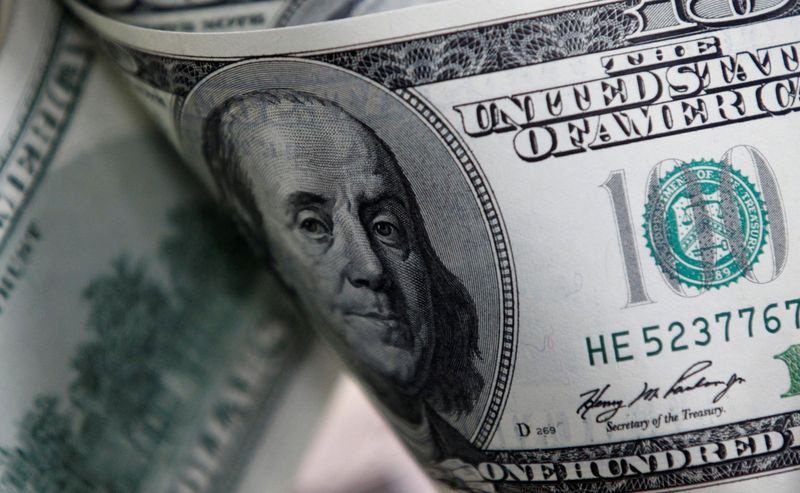
By Stefano Rebaudo and Wayne Cole
(Reuters) -The euro hit a 4-1/2-month low against the U.S. dollar as investors worried about possible U.S. tariffs which would hurt the euro area’s economy.
The greenback was within striking distance of the levels seen right after the U.S. presidential election against major currencies as markets focused on data and Federal Reserve speakers and waited for clarity about future U.S. policy. Analysts expect measures from President-elect Donald Trump to put upward pressure on inflation and bond yields while limiting the Fed’s scope to ease policy. However, they see investors trading on economic data and clues about the rate outlook before seeing what Trump’s policies would actually be in practice.
Market participants flagged that the sensitivity of the euro to the threat of higher U.S. import tariffs was evident late Friday, when media reported that Trump was lining up Robert Lighthizer, seen as a hawk on trade, to run his trade policy.
However, two sources familiar with the matter said Lighthizer has not been asked by Trump to return to the agency overseeing trade policy.
The single currency was down 0.3% at $1.0685, after hitting $1.0679, its lowest level since late-June.
“The thesis for dollar bears now is that it will take a while for tariffs to come through and the Fed recalibration to less restrictive monetary policy,” said Chris Turner, head of forex strategy at ING.
“We disagree and think this clean election result can boost US consumer and business sentiment at the same time as it weighs on business sentiment elsewhere in the world,” he added.
The dollar index was 0.3% firmer at 105.32. Last week, it jumped more than 1.5% to 105.44, its highest since early July, after U.S. presidential election results showed the Trump’s victory.
The dollar did regain 0.8% on the yen to 153.82, having been dragged off last week’s top of 154.70 by the risk of Japanese intervention. On Nov. 6 it hit 154.68, its highest level since July.
A summary of opinions from the Bank of Japan’s October policy meeting showed some members were unsure on when to raise rates. The decision will not be made any easier by political uncertainty as Japanese lawmakers should decide on Monday (NASDAQ:MNDY) whether Prime Minister Shigeru Ishiba remains leader after his coalition lost its parliamentary majority late last month.
The rate outlook will be crucial for the greenback in the near future, while all major central banks are easing their monetary policy.
U.S. consumer prices are due on Thursday and a core reading above the 0.3% forecasted would further reduce the chance of a Fed easing in December.
JPMorgan said it revised its U.S. terminal rate forecasts to 3.5% from 3% and expected one 25 bps Fed cut every quarter, starting from December.
The U.S. bond market is closed for a public holiday, though stocks and futures are open.
Citi expects U.S. rates to stay close to current levels in the near term as the market is caught between expectations of significant policy changes in 2025 and the easing cycle which is driven by near-term data.
Politics remained a drag in Europe as German Chancellor Olaf Scholz said he would be willing to call a vote of confidence before Christmas, paving the way for snap elections.
Analysts argued that the risk of policy changes in Germany which could lead to a looser fiscal policy is rising next year.
Disappointment at the latest package had seen the Australian and New Zealand dollars slide on Friday as both countries are major exporters to China.
The U.S. dollar hit versus offshore yuan its highest since early August stood at 7.2131, up 0.25%, having jumped 0.70% on Friday after falling 0.75% the day before.

Highlighting the bleak background in China, data out over the weekend showed consumer prices rose at the slowest pace in four months in October, while producer price deflation deepened.
Bitcoin soared to a record high above $81,000 on Monday on expectations that cryptocurrencies will boom in a favourable regulatory environment following the election of Trump as U.S. president and pro-crypto candidates to Congress.
This post is originally published on INVESTING.


